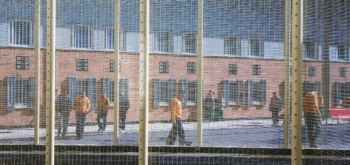Six out of ten women leave prison to live on the streets often ‘with just £46, a plastic bag, [and] nowhere to live’, according to a new study. The Safe Homes for Women Leaving Prison initiative was set up by the London Prisons Mission following its work at HMP Bronzefield, the largest women’s prison in Europe, to ensure that no woman is discharged from prison to homelessness or to unsafe accommodation.
The report quotes a 2019 report by the Independent Monitoring Board on Bronzefield which surveyed 116 women and revealed 62% expected to be homeless on release. The most recent IMB report on women’s resettlement found only 41% of women had housing to go to on release and that prisons discharging people back to London had ‘the most difficult challenge to find them suitable housing’. The same report revealed quarter of women interviewed had lost their home as a result of imprisonment, often as a consequence of a very short prison sentence.
John Plummer, coordinator at the London Prisons Mission, called the Safe Homes report ‘a damning indictment’ of a system that was ‘failing vulnerable women, society and the taxpayer’. ‘We have an absolute duty as a society to ensure women in prison can continue their recovery and rehabilitation in safe homes when discharged,’ he said. ‘This duty is not being met. As a result, vulnerable women with complex needs are being placed at risk of abuse and exploitation every day and subjected, alongside their families, to great ongoing distress.’
According to a 2016 report by the Prison Reform Trust, 60% of prisoners said that having a place to live would stop them reoffending. Accommodation is recognised by the National Offender Management Service as key to reducing reoffending for women. Dr Amanda Brown, a GP at Bronzefield, explained that vulnerable women repeatedly re-offended ‘in order to return to custody so that they have a bed to sleep in and feel safe at night’. This is further supported by a 2020 HMP Inspectorate of Probation report that found that almost two thirds of those without settled accommodation had reoffended (65%) compared to 44% with settled accomodation.
Jenny Earle, director of the Prison Reform Trust’s programme to reduce women’s imprisonment, described efforts under the government’s 2017 Homeless Reduction Act to prevent homelessness as ‘insufficient, patchy and intermittent’. According to the study, a review of the statute’s ‘duty to refer’ anyone at risk of homelessness on release to their local authority under the legislation was desperately needed.
The initiative highlights the concern that the duty to refer did not extend to cover short custodial sentences that result in women losing their accommodation, women with caregiving responsibilities, those escaping domestic abuse, as well as ‘the dearth of suitable social housing’.
The report also calls for an agreed target time period for women to be in settled accommodation post-release and an increase in the prison discharge grant from £46 to to £80.







